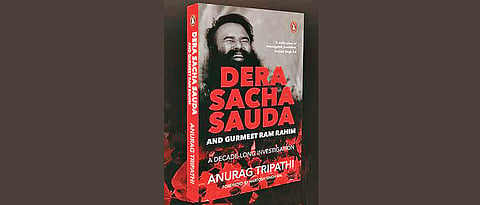

You know the major cast of characters, namely, Gurmeet Ram Rahim Singh Insan and his adopted daughter and alleged paramour, Honeypreet. You know the basic outline of the plot. You may also have been an unfortunate viewer of those MSG movies that the self-styled guru produced and starred in.
You definitely watched the drama of vandalism, glued to the TV, which unfolded in August 2017 after a court in Panchkula, Haryana convicted him in a rape case and sentenced him to 20 years in prison.
You definitely know the story from your newspaper, how the chief of the Dera accumulated power and wealth by means of extortion and land-grabbing. How he raped his female followers and coerced his male follower into castration, and murder, and other such sordid details.
Now the drama is done and the news is stale. So you wonder why this book, other than to cash in on the recent memory of the event. You read the book and you are surprised. The book is far better than it has any right to be. Besides, it serves a purpose trying to answer the question who is this man and what was his allure that inspired his followers to kill?
The answer is not clear, and understandably so, but the book illuminates the activities of the godman and his organisation better than any news report could, picking up the thread of the story much before it became media fodder.
In 2017, five years after CBI had launched an inquiry about him, Tripathi started his investigation into Gurmeet Ram Rahim, son of a landowner in Rajasthan, who was named the chief of the Dera in 1990 when he was 23.
The book begins with the hijinks of this investigating journalism, starting with an anonymous call, and follows it up with adventures of Tripathi and his co-investigator Etmad A. This is an adventure that will put your regular Dan Browns and Robert Ludlums to shame. This is the real power of the book.
As you read, you have to often remind yourself all these events really happened — the looming threat to life apart, there are suspicious meetings, last-minute turnarounds, undercover identities, frantic trips, sleepless nights, elements that if it were not real, you would blame it on the unpalatable imagination of the author. Simply put, what was going on at the Dera is much sordid and much more tragic.
Some readers may find the book titillating to an extent, but Tripathi is just holding the mirror to reality, and sometimes reality can be stranger than fiction.
